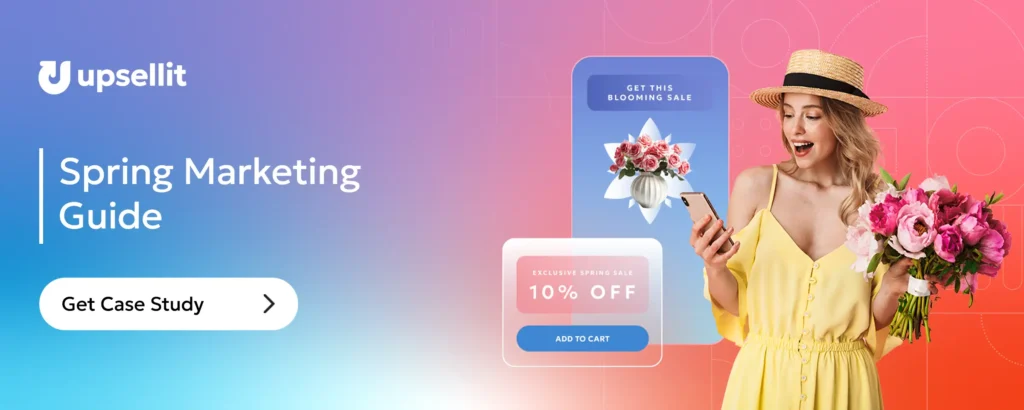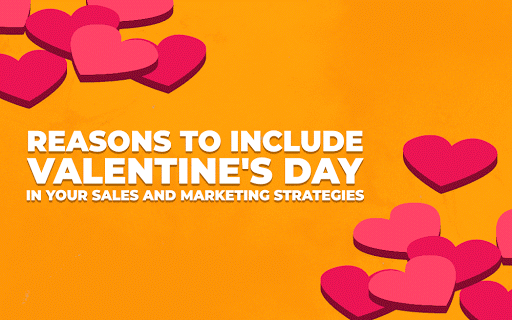Although it was initially a day of remembrance for a Catholic martyr, Valentine’s Day is now a mostly secular celebration of love. As traditions of gift giving have expanded over the years, so has the holiday’s annual revenue. In fact, conservative estimates by the NRF have forecast $20.7 billion in spending for this year. This is why you should include Valentine’s Day in marketing strategies.
For decades, the revenue generated by the holiday wasn’t spread around all that evenly. While candy companies and card makers could count on a rush, most other businesses got very little from the celebration.
However as per-person spending has continued to rise, less-traditional Valentine’s gifts have become far more popular. For this reason, this holiday should be a priority in Q1. If you’re still in doubt, here are four reasons to include Valentine’s Day in marketing strategies.
1. People Are Spending More on Valentine’s Day Than Ever Before
Although fewer Baby Boomers are planning to celebrate this year, younger generations have been picking up the slack and then some. In fact, those mad romantic Gen Y’ers are spending a record amount on Valentine’s Day gifts; earnings overall are expected to grow 6% this year.
Additional data points to the idea that many are simply celebrating in different ways. In fact 27% of people of non-Valentine’s celebrants still plan to “treat themselves” on Valentine’s Day. Thus, even if fewer people are celebrating this year, they’re still spending a great deal of money.
2. It’s Not All Flowers and Chocolate
It’s well known that Florists and Chocolatiers are at their busiest in February. 224 million red roses and 58 million pounds chocolate are sold every Valentine’s Day. However, while culture has not shifted away from these traditional gifts, they’re often purchased in addition to larger ones.
The average American man expects to spend about $240 on Valentine’s Day this year, which adds up quickly. In all, consumers will spend about $2 billion on flowers, $2 billion on candy, and $933 million on greeting cards. The significance of these figures? These Valentine’s Day staples make up less than 25% of total V-day spending.
Also good for ecommerce are the demographics for the holiday. Millennials are most likely to buy Valentine’s gifts, for a spouse or otherwise. This is great news for ecommerce, as Millennials shop online more than any other generation. With younger people spending more, the prospect of buying Valentine’s gifts online is looking up.
3. Half of Single People Celebrate Valentine’s Day
Valentine’s day has been traditionally thought of as a celebration for couples. In recent years however, single people have been joining in on the fun. Once a famously lonely night for singles, the day has become a time for romantically unattached people to celebrate other kinds of love. Trends have indicated that single people are taking the opportunity to buy gifts for family members, friends, and even beloved pets.
It’s also increasingly common to see groups of single friends make purchases for an “anti-Valentine’s Day” celebration. Some have even gone so far as to designate February 15th “Singles Awareness Day.” Although many singles celebrate Valentine’s Day with some level of irony, spending continues to climb.
4. Most People Wait Until the Last Minute
Similar to other major gift giving holidays, there are last minute shoppers. Surprisingly, most people put off Valentine Day shopping. In fact, over 78% of Valentine’s shoppers buy with less than a week to spare. 47% of men and 33% of women don’t finish shopping until the 48 hours leading up to the holiday. For marketers, this means that urgency can be especially effective.
Applied urgency works best when it’s complemented by natural urgency – such as when a sale is about to end, or stock is about to run out. In the case of Valentine’s day, shoppers know they have a limited time to act, and most people don’t plan far ahead. This allows marketers to make an extra push towards finding “the ideal gift.”
You don’t have to be Russell Stover or Hallmark to capitalize on this trend. Any gift that shows thought can work well for Valentine’s day – from apparel or electronics to bedding and housewares. You can emphasize urgency with a countdown clock on your site counting down to the day. For a more in-depth look at urgency, check out ‘3 Creative Ways to Sell without Incentives.’
Love is in the Air
Valentine’s Day offers a huge opportunity to enhance your Q1 earnings. This is why you should include Valentine’s Day in marketing strategies.
With traditions evolving and spending at an all time high, an extra push around the 14th can pay big dividends. Whether people celebrate sincerely, ironically, or within an uncertain grey area, one thing is clear: Valentine’s Day is bigger than ever.
Looking for Innovative Marketing Strategies?
Check out Upsellit’s Spring Marketing Guide. It’s packed with insights and innovative strategies. It’s a great resource and it’s totally free! Make the most of the season and download it today!

